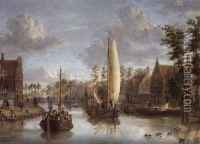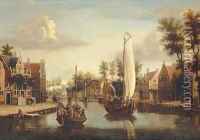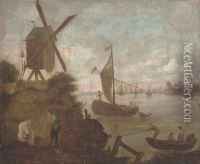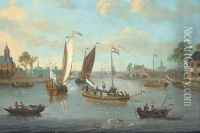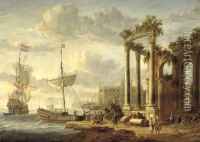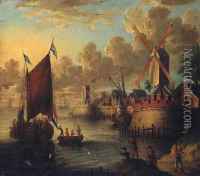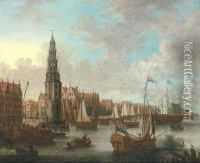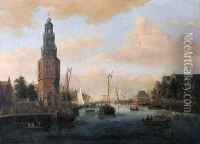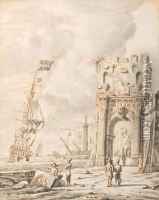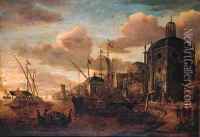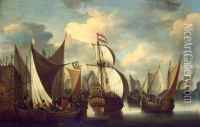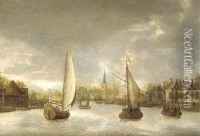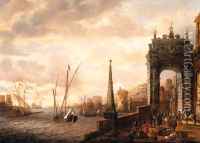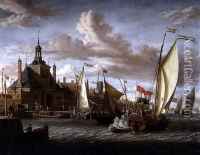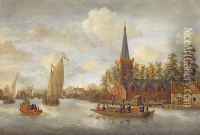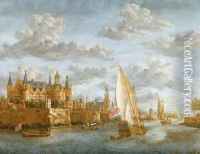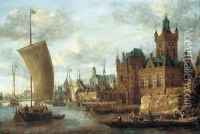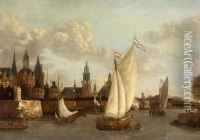Jacobus Storck Paintings
Jacobus Storck, also known as Jacob Willemsz. Storck, was a Dutch Golden Age painter renowned for his maritime scenes and harbor views. Born in 1641 in Amsterdam, he was part of a family of artists; his father, Willem Storck, and his brother, Abraham Storck, were also influential painters of the time.
Jacobus developed a keen interest in marine art, which was a popular genre in the Netherlands, a nation with a strong naval and mercantile tradition. He worked primarily in Amsterdam and was known for his detailed depiction of ships, the lively activity of harbor life, and the accurate representation of the Dutch coastline and waterways.
His works often include bustling scenes filled with an array of ships, from small fishing boats to large merchant vessels, and sometimes warships, often set against a backdrop of a town or cityscape. Storck's paintings are characterized by their clarity of detail, vibrant atmosphere, and the skillful use of light and reflection upon the water's surface.
Unlike some of his contemporaries who traveled extensively to capture various maritime subjects, Storck's work appears to be based largely on locales within the Netherlands, capturing the essence of Dutch maritime power at its peak. His paintings not only served as aesthetic objects but also as a testament to the prosperity and pride of the Dutch Republic during the 17th century.
Jacobus Storck's contribution to art history is significant for his ability to combine technical precision with a sense of narrative and liveliness, which brings his seascapes and harbor scenes to life. His works can be found in various museums and collections around the world and continue to be studied for their historical and artistic value.
Storck's date of death is not as well documented as his birth, but it is generally accepted that he passed away in Amsterdam around 1700. Despite being less well-known than some of his contemporaries, Storck's work remains an important part of the Dutch maritime painting tradition and continues to be appreciated by both art historians and collectors alike.
